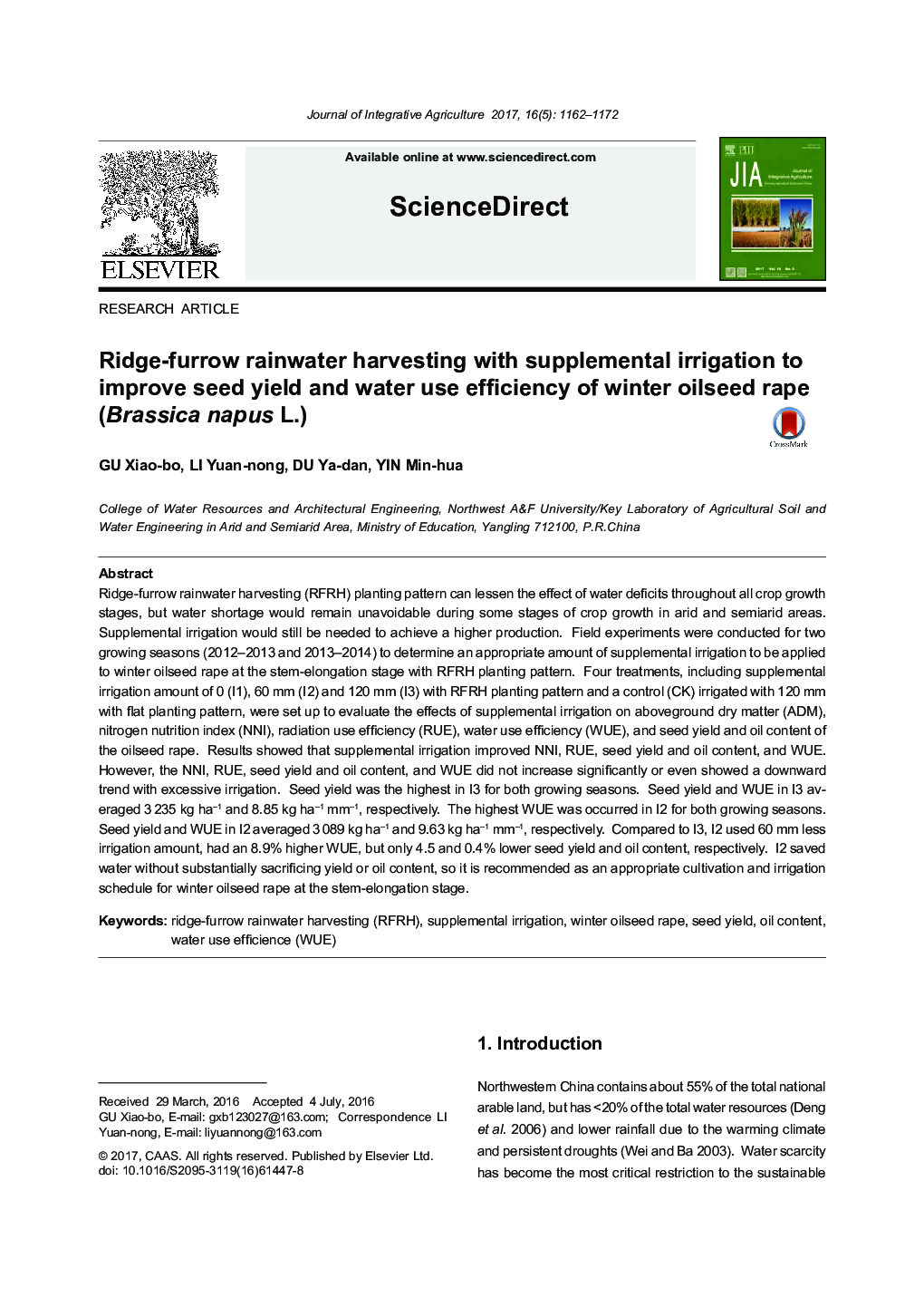| کد مقاله | کد نشریه | سال انتشار | مقاله انگلیسی | نسخه تمام متن |
|---|---|---|---|---|
| 8876014 | 1623709 | 2017 | 11 صفحه PDF | دانلود رایگان |
عنوان انگلیسی مقاله ISI
Ridge-furrow rainwater harvesting with supplemental irrigation to improve seed yield and water use efficiency of winter oilseed rape (Brassica napus L.)
دانلود مقاله + سفارش ترجمه
دانلود مقاله ISI انگلیسی
رایگان برای ایرانیان
کلمات کلیدی
موضوعات مرتبط
علوم زیستی و بیوفناوری
علوم کشاورزی و بیولوژیک
علوم کشاورزی و بیولوژیک (عمومی)
پیش نمایش صفحه اول مقاله

چکیده انگلیسی
Ridge-furrow rainwater harvesting (RFRH) planting pattern can lessen the effect of water deficits throughout all crop growth stages, but water shortage would remain unavoidable during some stages of crop growth in arid and semiarid areas. Supplemental irrigation would still be needed to achieve a higher production. Field experiments were conducted for two growing seasons (2012-2013 and 2013-2014) to determine an appropriate amount of supplemental irrigation to be applied to winter oilseed rape at the stem-elongation stage with RFRH planting pattern. Four treatments, including supplemental irrigation amount of 0 (I1), 60 mm (I2) and 120 mm (I3) with RFRH planting pattern and a control (CK) irrigated with 120 mm with flat planting pattern, were set up to evaluate the effects of supplemental irrigation on aboveground dry matter (ADM), nitrogen nutrition index (NNI), radiation use efficiency (RUE), water use efficiency (WUE), and seed yield and oil content of the oilseed rape. Results showed that supplemental irrigation improved NNI, RUE, seed yield and oil content, and WUE. However, the NNI, RUE, seed yield and oil content, and WUE did not increase significantly or even showed a downward trend with excessive irrigation. Seed yield was the highest in I3 for both growing seasons. Seed yield and WUE in I3 averaged 3 235 kg haâ1 and 8.85 kg haâ1 mmâ1, respectively. The highest WUE was occurred in I2 for both growing seasons. Seed yield and WUE in I2 averaged 3 089 kg haâ1 and 9.63 kg haâ1 mmâ1, respectively. Compared to I3, I2 used 60 mm less irrigation amount, had an 8.9% higher WUE, but only 4.5 and 0.4% lower seed yield and oil content, respectively. I2 saved water without substantially sacrificing yield or oil content, so it is recommended as an appropriate cultivation and irrigation schedule for winter oilseed rape at the stem-elongation stage.
ناشر
Database: Elsevier - ScienceDirect (ساینس دایرکت)
Journal: Journal of Integrative Agriculture - Volume 16, Issue 5, May 2017, Pages 1162-1172
Journal: Journal of Integrative Agriculture - Volume 16, Issue 5, May 2017, Pages 1162-1172
نویسندگان
Xiao-bo GU, Yuan-nong LI, Ya-dan DU, Min-hua YIN,